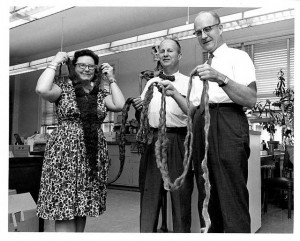The opening of Sasha Archibald’s wonderful Los Angles Review of Books essay about the history of the Smithsonian Institution, the respected American national museum whose roots are neither particularly respectable nor American:
“THE SMITHSONIAN MAY be America’s national museum, but it was not the brainchild of an American. The institution was foisted on the country by an outsider, an obscure British mineralogist who left a mysterious bequest. James Smithson never set foot in America, and there is little evidence that he befriended any Americans. He did not write approvingly (or disapprovingly) of the new democracy, and did not profess to admire American sensibilities. At the time he wrote his will, in 1826, the Smithsonian’s benefactor can best be described as a wealthy apolitical dandy, obsessed with his bloodline.
The Americans didn’t ask for Smithson’s charity, and neither were they glad to receive it. Congress had more pride than greed, and the unexpected gift rankled: not only was it that of a reviled Brit, but a Brit who dared demand he be acknowledged in perpetuity. Moreover, it was earmarked for a purpose Americans never would have chosen themselves. Smithson’s patronage was condescending — nothing more, one Congressman surmised, than a rich man’s bid for immortality. Even John Quincy Adams, the bequest’s most passionate advocate, refused to venerate Smithson as a magnanimous patron. It was Adams who kicked up a fuss when investors were allowed to squander the funds (later replenished by the US Treasury) and Adams who protested that a national farm didn’t meet Smithson’s stipulations. In private, however, he concurred that James Smithson was probably insane.
Insane, or perhaps just consumed by a single obsession. In addition to gifting a fortune to a country he’d never visited, Smithson’s other anomalous life decision was to change his name, at the late age of 36. He was the illegitimate child of the Duke of Northumberland, Sir Hugh Smithson, and although he never suffered for material want — his widowed mother managed to amass a fortune — his exclusion from the Northumberland dynasty irked him through adulthood. After both his parents died, Smithson abandoned his mother’s familial name, Macie, and claimed his father’s, vowing, somewhat histrionically, that Smithson would become more enduring a name than Northumberland.
That seemed unlikely. The Northumberlands were one of the wealthiest and most prominent families in Britain, while Smithson’s solitary life was occupied mainly by the meetings of various science clubs. He collected rocks and published articles on dilettantish topics — the mineral content of a woman’s tear, and how to brew a better cup of coffee. Traveling with a manservant and a lavish silver tea service, he settled in Paris, added a pompous flourish to his new name (‘Monsieur de Smithson’), and commissioned portraits of himself. By 1816, in his early 50s, Smithson had named Britain’s Royal Society as the benefactor of his trust, but the Society misstepped in deleting a few sentences from an article Smithson had submitted for publication. Always quick to perceive a slight, Smithson decided to gift his money elsewhere. He traveled to England one last time, in 1825, to make end-of-life arrangements, liquidating his property and drafting a will and testament that named his nephew as the primary benefactor. Should his nephew have no heirs (legitimate or illegitimate, Smithson pointedly wrote), the money should be used for ‘an Establishment for the increase & diffusion of knowledge among men’ in America, to be known as the ‘Smithsonian Institution.’
Having tended to business, Smithson returned to Paris, and then, likely anticipating his death, decamped in high style to Genoa, bringing along his silk handkerchiefs and jewel collection, where he quietly died June 27, 1829. (There is no record of the cause of death, and exhuming Smithson’s skeleton, in 1973, yielded only that he was very petite, with many rotten teeth.)”

